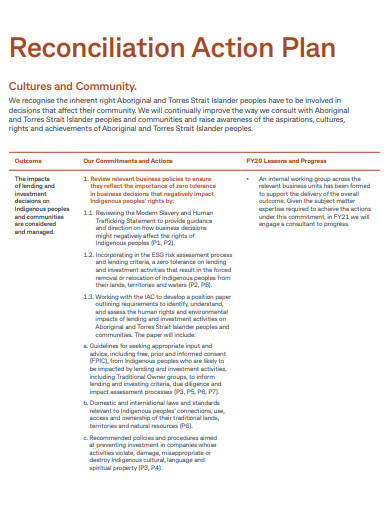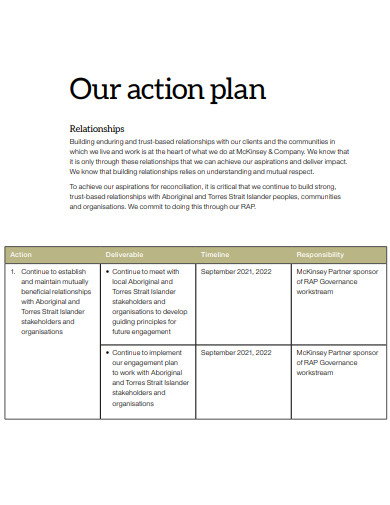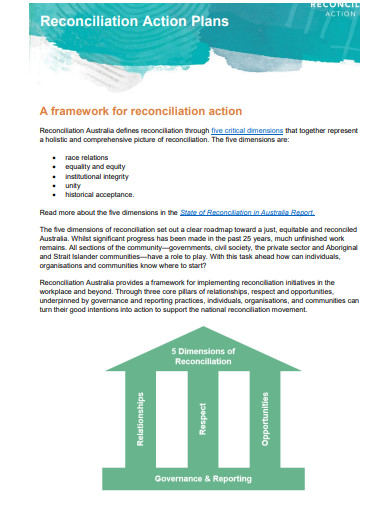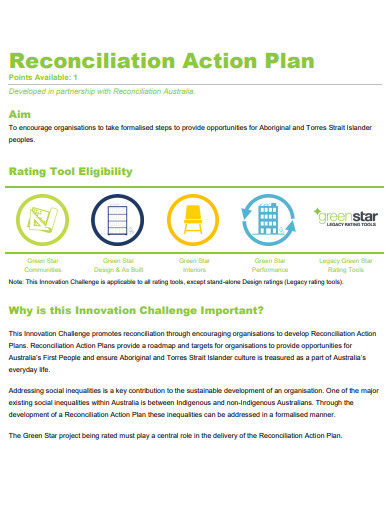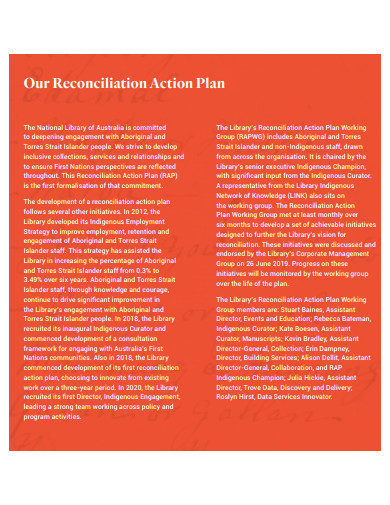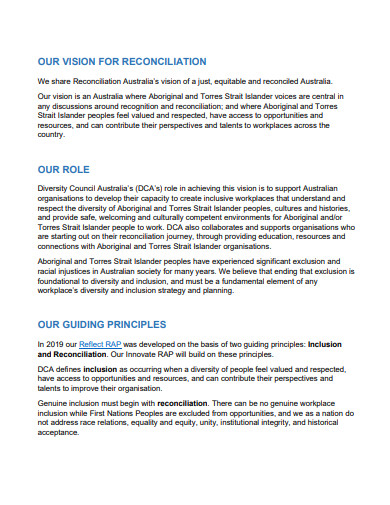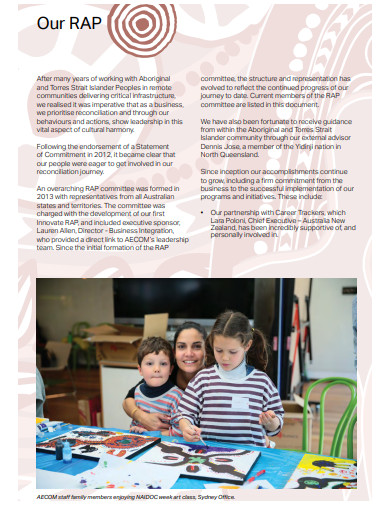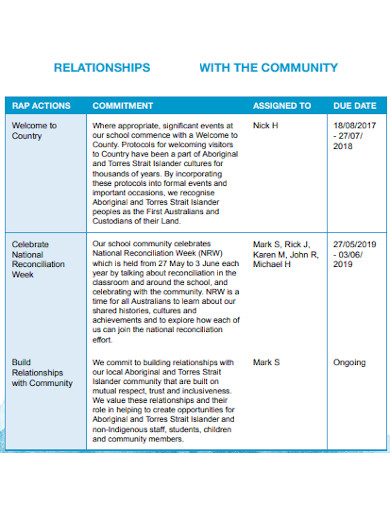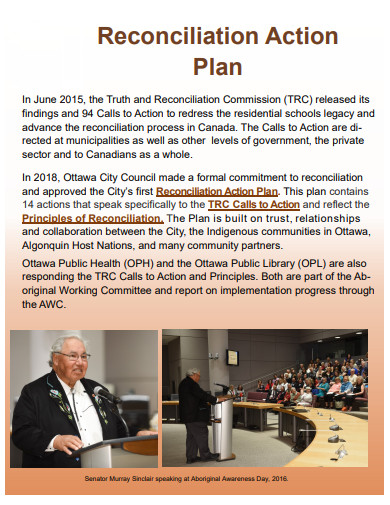Many people think that reconciliation merely means forgiveness. But this word holds a variety of meanings in different contexts. In the context of an organization, reconciliation is a collection of values that improve a group’s sense of belonging, dignity, and respect. Reconciliation entails building inclusive workplaces in which we view one another through humanitarian lens, learning from and drawing on our diverse life experiences. Reconciliation is used by individuals and institutions to describe attempts to promote awareness of colonialism and its ongoing effects on Indigenous people. Reconciliation also includes efforts to repair the harm inflicted by colonial laws and practices, such as residential schools. You need a thorough strategy in place to successfully implement this– and look no further! In this article, we provide you with free and ready-to-use samples of Reconciliation Action Plans in PDF and DOC formats that you could use for your organization. Keep on reading to find out more!
10+ Reconciliation Action Plan Samples
1. Reconciliation Action Plan
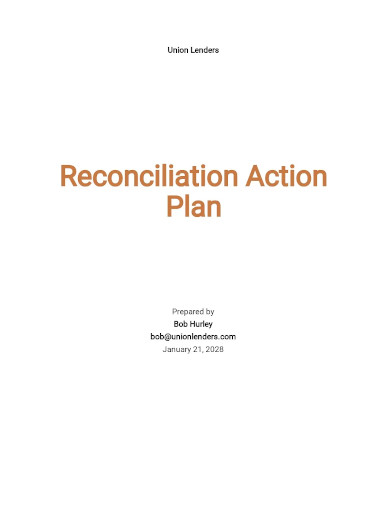
2. Elevate Reconciliation Action Plan
3. Sample Reconciliation Action Plan
4. Simple Reconciliation Action Plan
5. Reconciliation Action Plan Example
6. Basic Reconciliation Action Plan
7. Stretch Reconciliation Action Plan
8. Innovate Reconciliation Action Plan
9. Formal Reconciliation Action Plan
10. Professional Reconciliation Action Plan
11. Printable Reconciliation Action Plan
What Is a Reconciliation Action Plan?
A reconciliation action plan can provide a platform for your employees and other stakeholders to become more culturally sensitive. Knowing how to carry out reconciliation processes may help your company enhance its connections with partners, clients, and other interested parties.
Reconciliation, like many other efforts, is a process that will grow as you and your organization take action.
How to Make a Reconciliation Action Plan
Reconciliation Action Plan must be established in collaboration with all stakeholders, and they must be quantifiable, action-oriented, and transparent. They might consist of baby steps or significant decisions. A Reaction Action Plan template can help provide you with the framework that you need to ensure that you have a well-written and progressive plan in hand. You can choose one of our excellent templates listed above so that you don’t have to go through the process of drafting it from scratch. If you want to write one yourself, follow these steps below to guide you:
1. Create a list of tasks and prioritize them.
Make a point of being specific while creating the reconciliation action plan you’ll utilize. You must ensure that the document you write is appropriate for the nature of your operations and related to the goals you wish to attain. You must design your tactics properly in order to ensure that your reconciliation action plan is actually beneficial to the company.
2. Examine the present state of your business.
Identify the actions you’ll need to do so you can be aware of the gap you’ll need to close with the assistance of the reconciliation action plan. Examining the present state of your operations will be useful to both you and your company. With the aid of the reconciliation action plan and other organization or company papers, you may compare this to the condition where you want to be.
3. Determine the resources needed.
Before you begin your action plan, double-check that you have all of the materials you’ll need to execute the activities. If they aren’t available right now, you must first devise a strategy for obtaining them. As a result, establishing a budget for the completion of activities may be necessary; you may, for example, add a column to your action plan to note the cost of each job, if any.
4. Monitor, assess, and revise
This is the most crucial stage of the procedure. It’s pointless to define the complete action plan, go through all of the steps, and then forget about it. Monitoring is one of the most important and well-defined aspects of any successful plan. It is the responsibility of the person in charge of the plan to be there at all times, either to give support or to serve as a reminder. Review your action plan on a regular basis and involve your colleagues to keep moving forward without losing sight of your aims and ambitions.
FAQs
What is the significance of reconciliation?
The reconciliation process is crucial for all organizations because it involves the fundamentals of how we treat one another as fellow human beings and the kind of relationships and communities we wish to establish in the future.
In finance, what is a reconciliation?
The process of reconciling transactions and activity with supporting paperwork is known as reconciliation. Reconciliation also entails addressing any inconsistencies that have been identified.
Is reconciliation a common occurrence?
Decolonizing our relationships and creating new ones based on understanding and respect is powerful for all of us – Indigenous, settler, immigrant, and refugee alike — and reconciliation is a continuous process, not an event.
Reconciliation entails achieving equity and equality, bridging the gap, and forging new partnerships in order to accomplish so. As such, having a Reconciliation Action Plan is crucial. To help you get started with this, download our easily customizable and comprehensive Reconciliation Action Plan samples today!
Related Posts
FREE 9+ 30-Day Marketing Plan Samples in PDF | MS Word | Apple Pages | Google Docs
FREE 3+ Sales Team Action Plan Samples in PDF | MS Word | Apple Pages | Google Docs
Marketing Plan For Small Business Samples
FREE 7+ Fashion Business Plan Samples in PDF
FREE 10+ Sprint Planning Samples In MS Word | Google Docs | PDF
FREE 10+ Wedding Planning Samples in MS Word | Apple Pages | Powerpoint | PDF
FREE 9+ Monthly Study Planner Samples in PSD | Illustrator | InDesign | PDF
FREE 9+ Sample Curriculum Planning Templates in PDF | MS Word
FREE 10+ Teacher Development Plan Samples in MS Word | Google Docs | Apple Pages | PDF
FREE 10+ Basketball Practice Plan Samples in PDF
FREE 12+ School Business Plan Samples in PDF | MS Word | Apple Pages | Google Docs
FREE 7+ Client Strategic Plan Samples in PDF | MS Word
FREE 11+ Trucking Business Plan Templates in PDF | MS Word | Google Docs | Pages
FREE 7+ Small Hotel Business Plan Samples PDF | MS Word | Apple Pages | Google Docs
FREE 14+ Bakery Business Plans in MS Word | PDF | Google Docs | Pages

